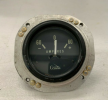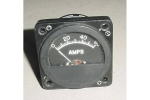Ventucky Red
Pattern Altitude
- Joined
- Jan 9, 2013
- Messages
- 2,179
- Display Name
Display name:
Jon
When starting your airplane, on the master switch, do you just use the battery to start then flip on the alternator, or both and crank away?
Battery only. My alternator doesn't seem to come online if it's on for start. Cycle it, and it's fine, but I tend to just leave it off for start.When starting your airplane, on the master switch, do you just use the battery to start then flip on the alternator, or both and crank away?
When starting your airplane, on the master switch, do you just use the battery to start then flip on the alternator, or both and crank away?
I just use the checklist from the manufacturer.
I don’t think the checklist is regulatory, it’s advisory. We can adjust as needed.This is what created the discussion. Working on an IPC the instructor brought this up when starting the plane. The list says "Master On" to me means both. The instructor says battery, start, alternator, check.
I think this is where the real difference is - not in what's best for starting, but what's best for confirming normal behavior of your alternator once it comes online.I do Bat only, then observe positive charging when I click on the alternator after start.
The question doesn‘t seem to be about whether or not the checklist is regulatory, but what the words in the checklist actually mean.I don’t think the checklist is regulatory, it’s advisory. We can adjust as needed.
This ^^^^^I just use the checklist from the manufacturer.
It doesn’t appear that the manufacturer’s checklist says anything about the alternator subsequent to “Master Switch ON,” so I would say the manufacturer is expecting them both to be turned on at that point.This is what created the discussion. Working on an IPC the instructor brought this up when starting the plane. The list says "Master On" to me means both. The instructor says battery, start, alternator, check.
The ultimate in green technology. You could probably get government subsidies for such a device with the current admin....uh...in todays political climate.Both, If you leave the alternator on, you will charge the battery while you're spinning the starter. This means that you can crank the engine forever.
Sounds like some instructor-generated mythology. The alternator feeds the bus, which feeds the battery and everything else. The ammeter tells you which way the current is flowing between the battery and bus. Only the starter current bypasses the ammeter and bus. There is no need for a big ammeter capable of measuring starter current, and if that current went through the bus we'd need a much heaver bus bar.Generally, Cessna, Beech and Mooney are turn both on, PIper and Cirrus battery only. I was told at one time the difference was if the current from the alternator fed accessories first or the battery first. Don’t know if that is correct.
The starter itself generates a large voltage spike when it is released. Much bigger threat than the alternator turning on. Even the starter contactor generates a spike when you release the key. Radios should all be turned off, either with a radio master, or by the radios' switches.The only reason I can think of for not turning it on is if the airplane doesn't have a radio master and leaving the alternator off at startup reduces a voltage surge. Modern airplanes should have radio masters so it shouldn't be an issue. Or maybe I'm totally wrong in my assumption. Either way, it works for me.
This is generally true for Cessna's. But Piper generally has the ammeter tell you the flow from the alternator/generator to the gus.The ammeter tells you which way the current is flowing between the battery and bus.
Yes. Good point that I knew but failed to make. I prefer an ammeter rather than Piper's loadmeter (the correct term for it) since the ammeter will show a definite discharge if the alternator quits on a nice, bright, VFR day, while a loadmeter will go from a very low trickle-charge reading to zero, not a really noticeable movement. The ammeter's movement will be at least double that of the loadmeter.This is generally true for Cessna's. But Piper generally has the ammeter tell you the flow from the alternator/generator to the gus.
Pretty easy to tell the how your ammeter is wired in. if between the bus and battery the ammeter will show a positive or negative flow, showing current going in or out of the battery.
if the ammeter is between the alternator and the bus it will only have a positive values.
Brian
CFIIG/ASEL


